High Risk Auto
High-Risk Auto: Understanding and Managing Insurance for Challenging Driving Situations
High-risk auto insurance is a specialized type of coverage designed for drivers who are considered higher risk due to various factors such as a history of accidents, traffic violations, or other circumstances. While obtaining insurance coverage for high-risk situations may be more challenging, it is essential for drivers to ensure their protection on the road.
Reasons for High-Risk Classification:
Several factors can lead to a high-risk classification for auto insurance. These include:
History of Accidents: Drivers with a record of past accidents, especially those deemed at fault, are often considered high risk. Insurance companies view a history of accidents as an indication of increased probability for future claims.
Traffic Violations: Frequent traffic violations, such as speeding tickets, reckless driving, or DUI offenses, can result in a high-risk classification. These violations suggest a higher likelihood of future accidents or violations.
Inexperienced Drivers: New and inexperienced drivers, such as teenagers or individuals who have recently obtained their driver's license, are often considered high risk due to their lack of driving experience and higher statistical likelihood of being involved in accidents.
Poor Credit History: Some insurance companies consider a driver's credit history when determining risk. Individuals with poor credit scores may be categorized as high risk, as statistical data suggests a correlation between credit history and the likelihood of filing insurance claims.
Managing High-Risk Auto Insurance:
While high-risk auto insurance may come with higher premiums, there are strategies drivers can employ to manage their insurance in these situations:
Comparison Shopping: When searching for high-risk auto insurance, it is crucial to compare quotes from multiple insurance providers. Different companies may have varying rates and coverage options for high-risk drivers. By exploring different options, drivers can potentially find more affordable coverage.
Defensive Driving Courses: Completing a defensive driving course can demonstrate a commitment to safe driving practices and may lead to lower insurance rates. These courses provide valuable knowledge and skills to help drivers navigate challenging situations on the road.
Maintain a Clean Driving Record: Focus on maintaining a clean driving record going forward. Safe driving habits, adhering to traffic laws, and avoiding accidents and violations can gradually improve your risk profile and potentially lead to lower insurance premiums over time.
Consider Higher Deductibles: Opting for higher deductibles can help lower insurance premiums for high-risk drivers. However, it is essential to assess your financial situation and ensure you can comfortably afford the deductible amount in the event of an accident.
Improve Credit Score: If poor credit history is a contributing factor to your high-risk classification, taking steps to improve your credit score over time can positively impact insurance premiums. This includes paying bills on time, reducing debt, and maintaining a responsible approach to credit.

Here are a few more points about high-risk auto insurance:
High-risk auto High-risk auto High-risk auto High-risk auto High-risk auto High-risk auto High-risk auto High-risk auto High-risk auto
Non-Standard Insurance Companies: High-risk drivers may need to seek coverage from non-standard insurance companies that specialize in providing insurance to drivers with challenging risk profiles. These companies have expertise in assessing and managing higher-risk situations and may offer more flexible options for coverage.
SR-22 Insurance: For drivers with a history of serious violations or license suspensions, an SR-22 form may be required. This form serves as proof of financial responsibility and is filed with the state's Department of Motor Vehicles (DMV). It is essential to comply with the requirements of an SR-22 filing, as failure to maintain this coverage can result in further penalties and potential loss of driving privileges.
Regular Policy Review: It is important for high-risk drivers to regularly review their insurance policy and coverage to ensure it meets their needs. As circumstances change and violations or accidents drop off the driving record, it may be possible to qualify for standard auto insurance and obtain lower premiums.
Driving Behavior Monitoring Programs: Some insurance companies offer usage-based or telematics programs that track driving behavior through devices installed in the vehicle. By participating in these programs and demonstrating safe driving habits, high-risk drivers may be eligible for discounts or lower premiums based on their actual driving performance.
Responsible Vehicle Selection: Choosing a vehicle with good safety ratings and security features can positively impact insurance premiums for high-risk drivers. Vehicles with advanced safety technology, such as anti-lock brakes, airbags, and security systems, are generally considered lower risk, which can result in more affordable insurance rates.
Gradual Improvement: High-risk drivers should focus on gradual improvement over time. As violations and accidents become further removed in the driving history, insurance rates may gradually decrease. Consistently practicing safe driving habits and maintaining a clean record will contribute to long-term improvements in insurance affordability.
High-risk auto insurance provides essential coverage for drivers who face challenging situations on the road. While it may involve higher premiums, there are strategies to manage insurance costs and potentially improve risk profiles over time. By comparison shopping, maintaining a clean driving record, considering defensive driving courses, exploring policy discounts, and responsibly managing credit, high-risk drivers can find suitable coverage that provides the necessary protection on the road. It is important to consult with insurance professionals to understand the specific requirements and options available for high-risk auto insurance in your jurisdiction. By prioritizing safe driving practices and taking proactive steps to mitigate risk, drivers can work towards improving their insurance profile and maintaining financial security on the road.
High Risk Auto High Risk Auto High Risk Auto High Risk Auto High Risk Auto High Risk Auto High Risk Auto High Risk AutoHigh Risk Auto High Risk Auto High Risk Auto
